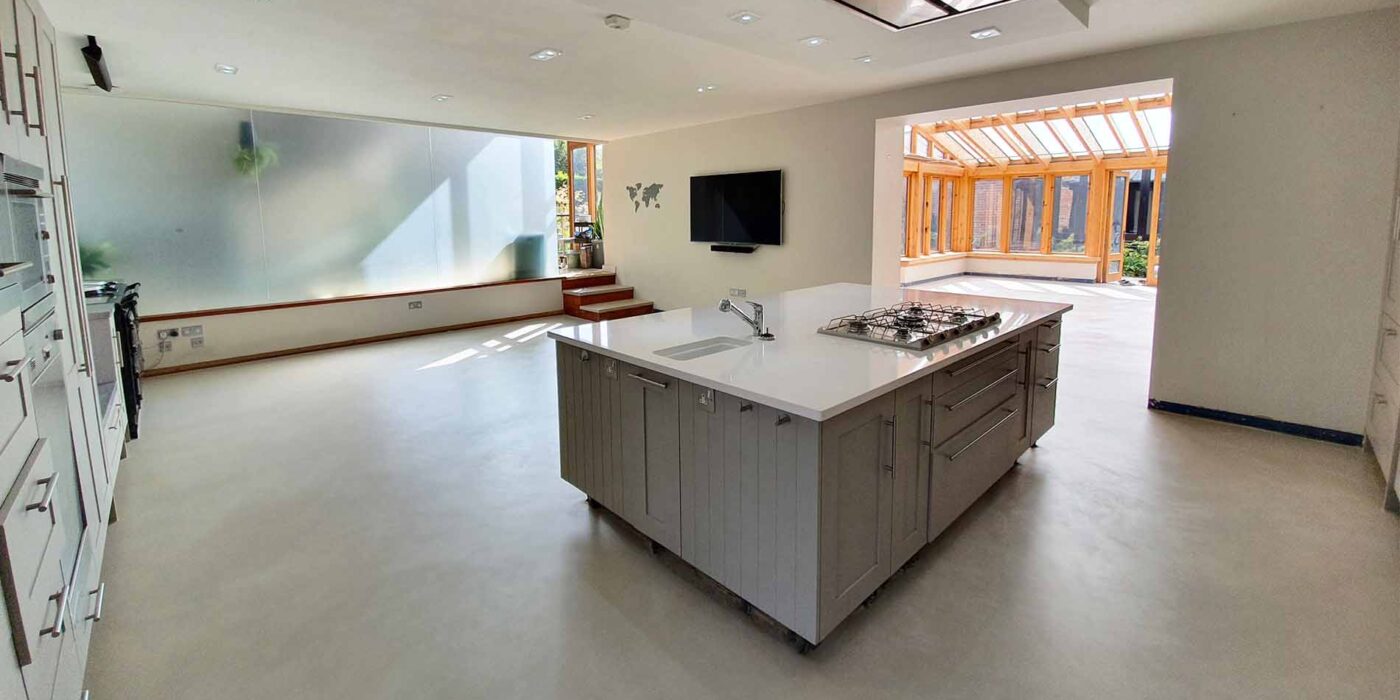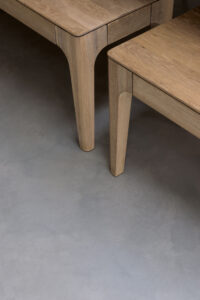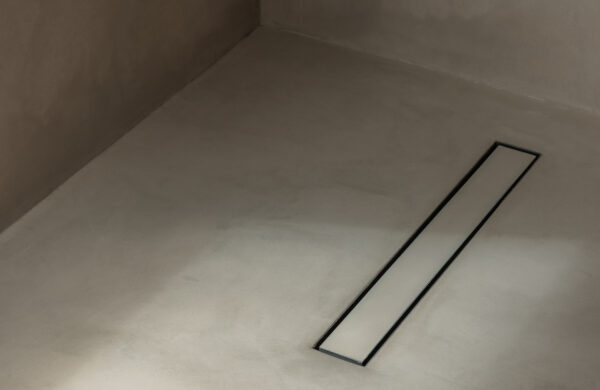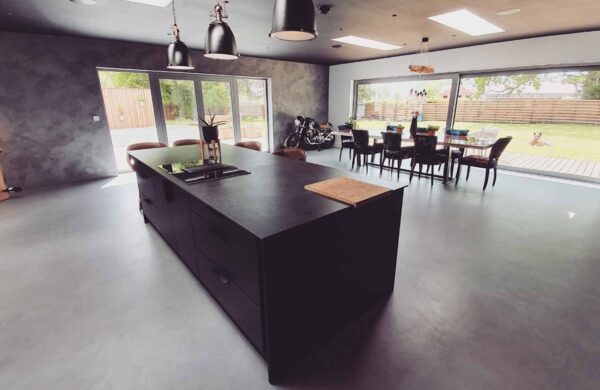
At Forcrete, we’re committed not only to delivering high-quality microcement finishes but also to ensuring they are safe, sustainable and healthy for the people living with them. In this article, we explore a key question often asked by homeowners, specifiers and architects across the UK.
It’s a topic that’s come up often in our conversations with architects and designers this year.
Is microcement safe and non-toxic?
What do we really know about VOCs, indoor air quality and how microcement compares with alternative materials?
Let’s take a closer look.
What are VOCs, and why do they matter for indoor air quality
VOCs are volatile organic compounds. These are organic chemicals that evaporate at normal room temperature. They are common in many building materials, finishes, adhesives, paints and sealants.
In indoor settings, VOCs can build up and may contribute to irritation of the eyes, nose and throat, as well as headaches and respiratory sensitivity. Because most people spend much of their time indoors, material choices can significantly affect indoor air quality.
Ultimately, the safety of any microcement depends on its VOC emissions during and after installation.
What is microcement, and how does that affect VOCs?
To understand safety, it helps to look at what microcement contains.
- Base materials: cement, fine aggregates, mineral pigments, water and polymer resins or additives for flexibility and adhesion.
- Water-based resins: modern microcement systems often use waterborne polymer binders, which significantly limit VOC emissions.
- Additives and sealers: these can include dispersants, adhesion promoters, curing agents, and topcoats and sealers, which sometimes contain VOCs depending on the chemistry.
Reputable manufacturers now offer low-VOC or VOC-free microcement formulations. However, not all microcement is the same. Some older systems or cheaper mixes may include higher VOC content. The quality and consistency of the product are critical.
VOC risk is highest during mixing, application and curing. Once fully cured, emissions drop to negligible levels.
How microcement compares to other materials
| Material | Typical VOC emissions | Notes |
| Conventional paints and varnishes | Often moderate to high | Off-gassing for days or weeks |
| Sealants and adhesives | Can have high VOCs | Especially in tile installations, there is a requirement for ventilation |
| Epoxy or resin coatings | Strong chemical odours during cure | Extended ventilation required |
| Microcement (low VOC, water-based) | Very low to near zero after cure | Safer and healthier choice |
Microcement with water-based resin systems typically has low VOC content, making it a better choice for both indoor air quality and the environment.
Factors that determine microcement safety and air quality
Product formulation and certification
Look for certified low VOC systems and request technical or safety data sheets.
Correct mixing and dilution
Use materials exactly as specified and avoid adding non-approved chemicals.
Ventilation during installation
Ensure good airflow for 24 to 72 hours while the product cures.
Protective equipment
Use gloves, goggles, and a mask to protect against dust or vapour during application.
Choice of sealers and topcoats
Select low-VOC or waterborne sealers as the topcoat, as they can add unwanted VOCs.
Curing and off-gassing time
Allow the surface to cure before occupancy to minimise exposure fully.
Maintenance products
Use pH-neutral cleaners such as Eco Cleaner or Multi-Purpose Cleaner and avoid harsh solvents.
When managed correctly, microcement performs as a stable, inert surface with minimal or no VOC emissions in daily use.
If you would like to speak with a professional to ensure you are getting the right product for your project, find an expert installer today.
Is microcement safe for indoor air quality?
In residential interiors such as living rooms, kitchens, and bathrooms, properly installed low-VOC systems are safe for everyday use. In schools, nurseries and hospitals, it is important to use systems that have documented VOC testing or environmental certifications.
For sensitive occupants, using certified zero-VOC systems and allowing extended ventilation before occupancy can help. Once cured, microcement becomes a stable mineral polymer composite that does not continuously release VOCs like some solvent-based coatings.
To learn more about different application systems, visit our microcement systems page.
Frequently asked questions
Does microcement emit VOCs after curing?
Very little. In high-quality systems, emissions are minimal once the surface has cured.
How can I confirm a product is low VOC or non-toxic?
Ask for laboratory test results, data sheets, or certifications showing VOC levels, or review available technical documentation.
What precautions should installers take?
They should ensure good ventilation and wear appropriate protective equipment. Learn more about professional installation training.
Do topcoats add VOCs?
Yes, they can. Always choose breathable, waterborne or low-VOC sealers.
Is microcement suitable for small or poorly ventilated areas?
Yes, but only when using the lowest VOC systems available and allowing for extended airing during and after installation.
How long should I wait before using a room after installation?
The duration is usually 24 to 72 hours, depending on the system and conditions, though sensitive users may wish to wait longer.
All Forcrete systems are independently tested and produced under strict UK quality standards.
Forcrete’s commitment to safety and sustainability
At Forcrete, we believe aesthetics should never compromise health or performance. We carefully select low-VOC and non-toxic microcement systems and review supplier safety data. We promote safe installation practices and recommend eco-friendly maintenance products.
We stay informed about the latest research, building standards, and green certifications to ensure our products remain safe, modern, and environmentally responsible.
Microcement can be a non-toxic and sustainable choice when used correctly. With careful material selection and professional installation, it provides not only beauty and durability but also a healthier indoor environment.
If you’re specifying microcement for a project and want to ensure compliance with the latest sustainability standards, contact us for guidance or explore our certified low-VOC systems.










